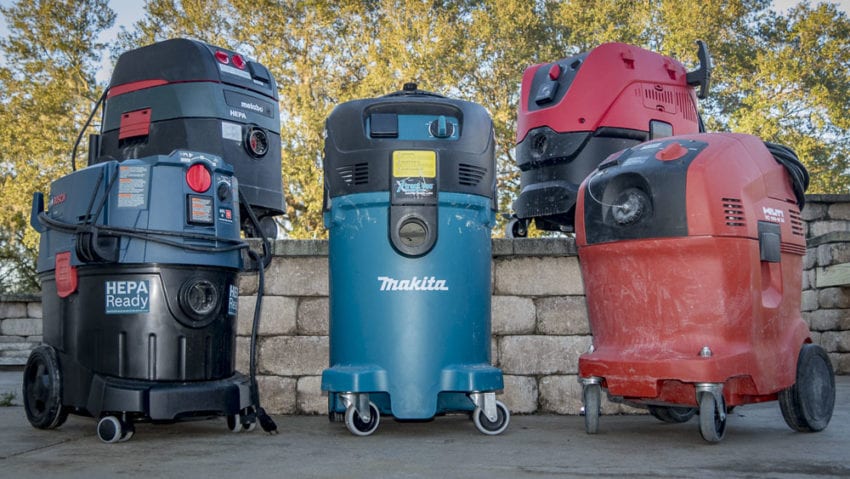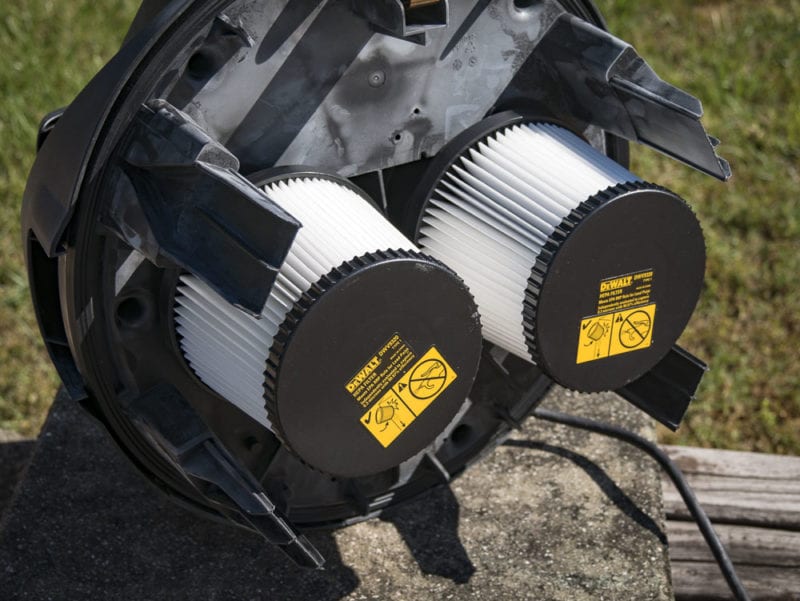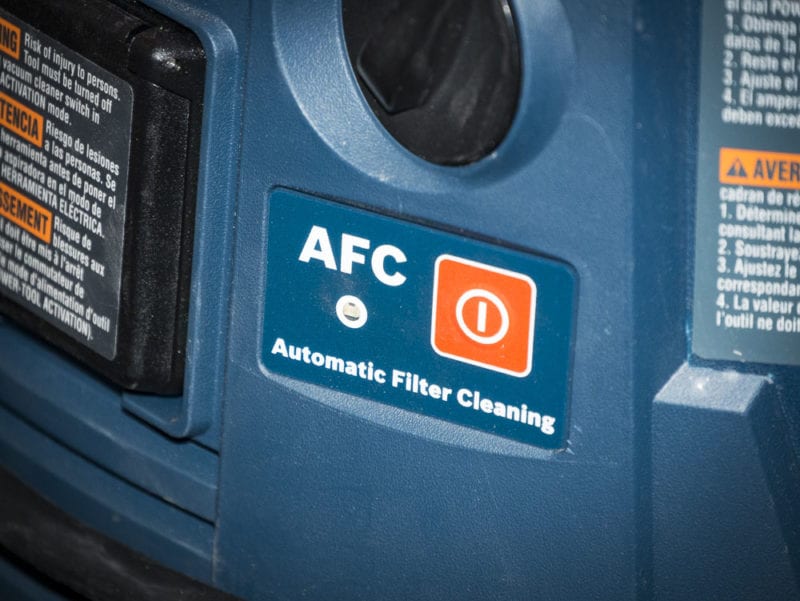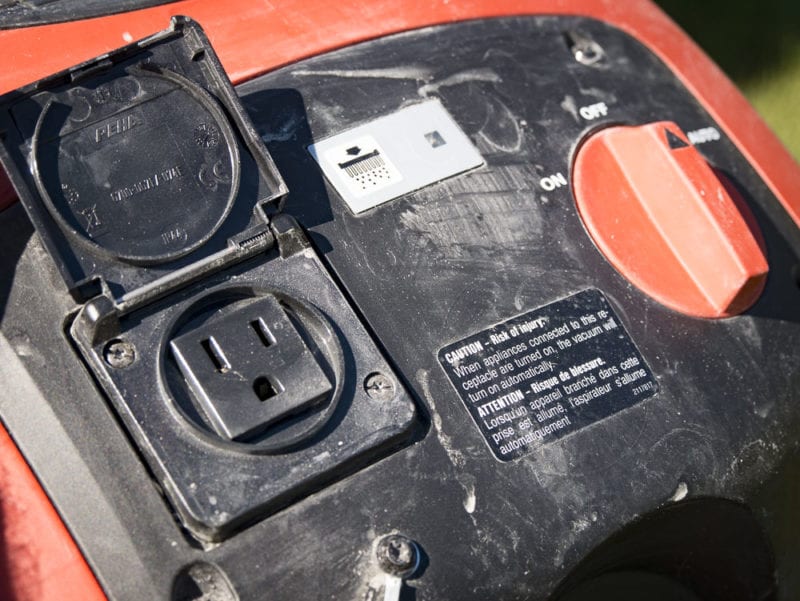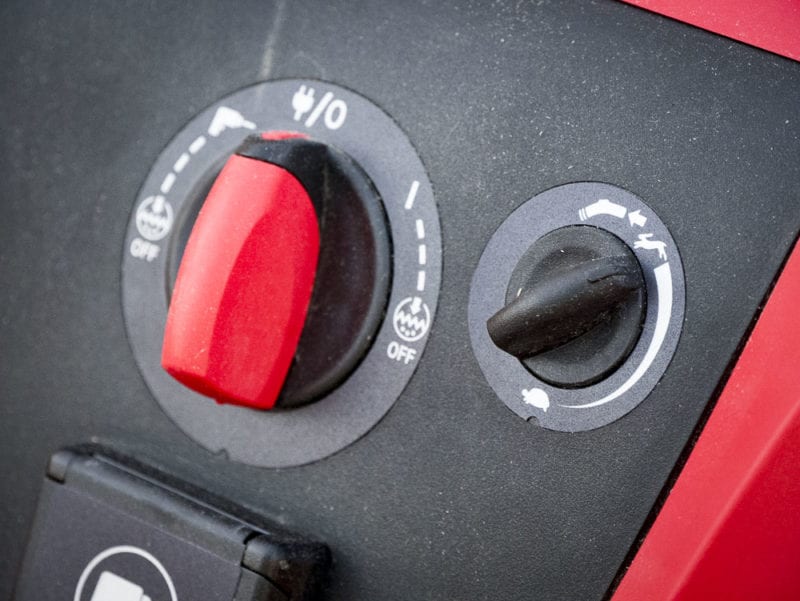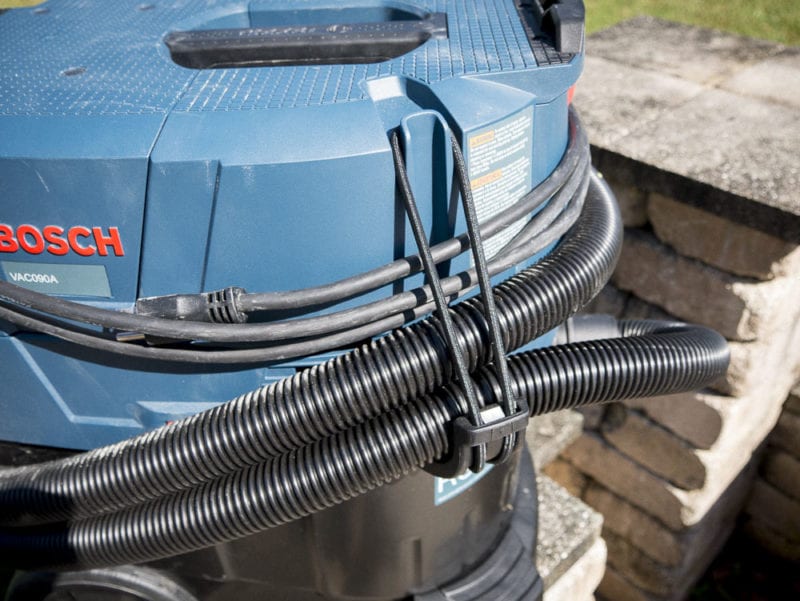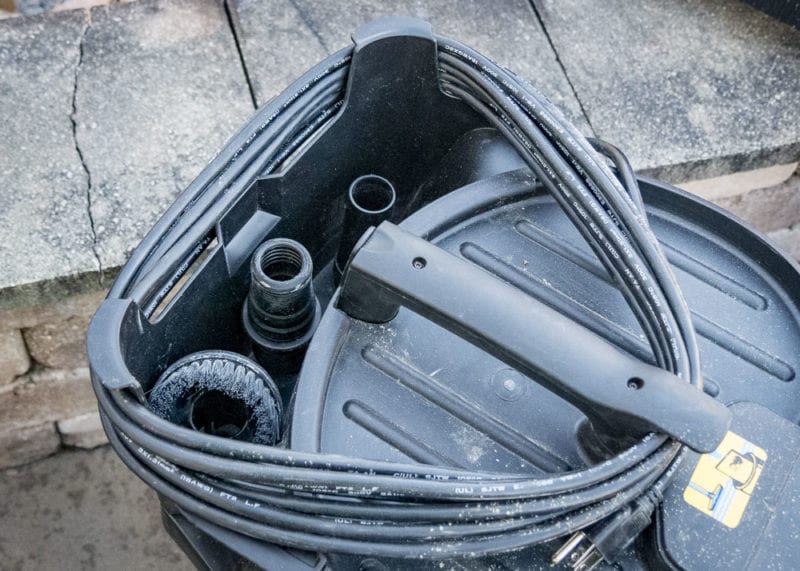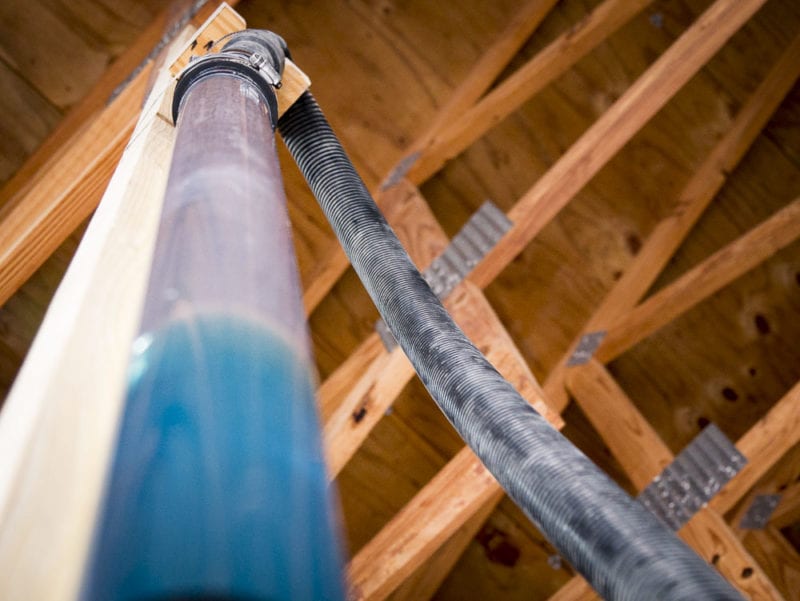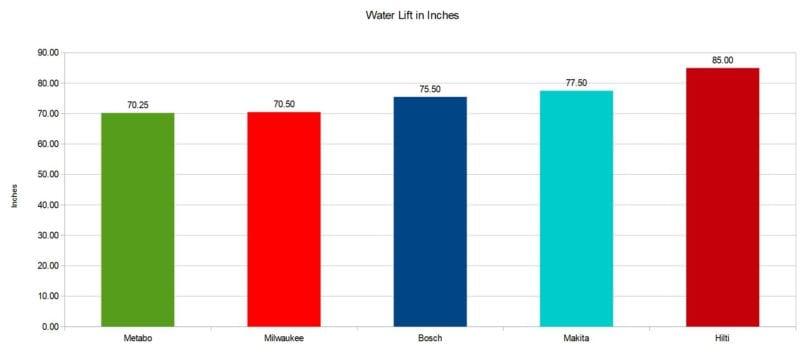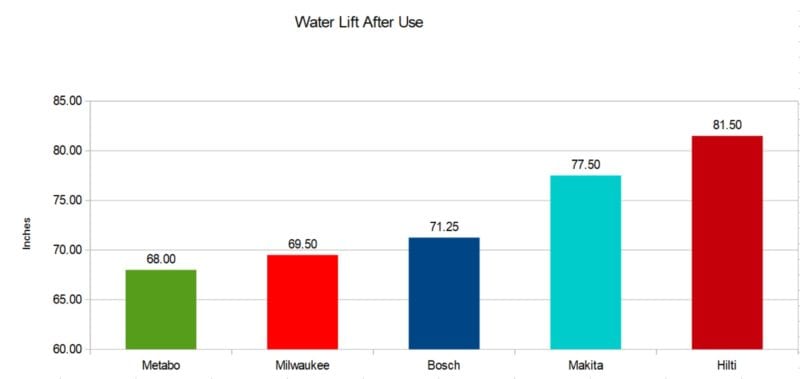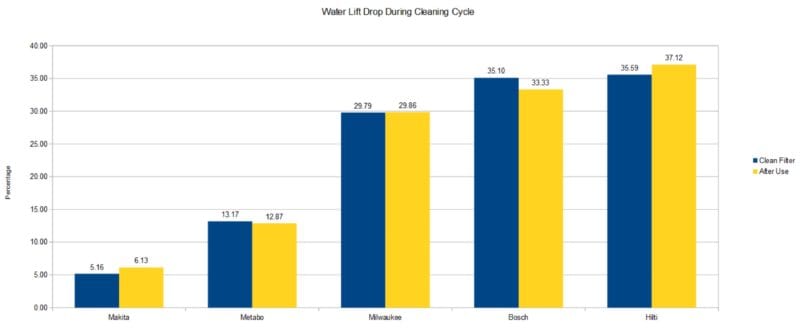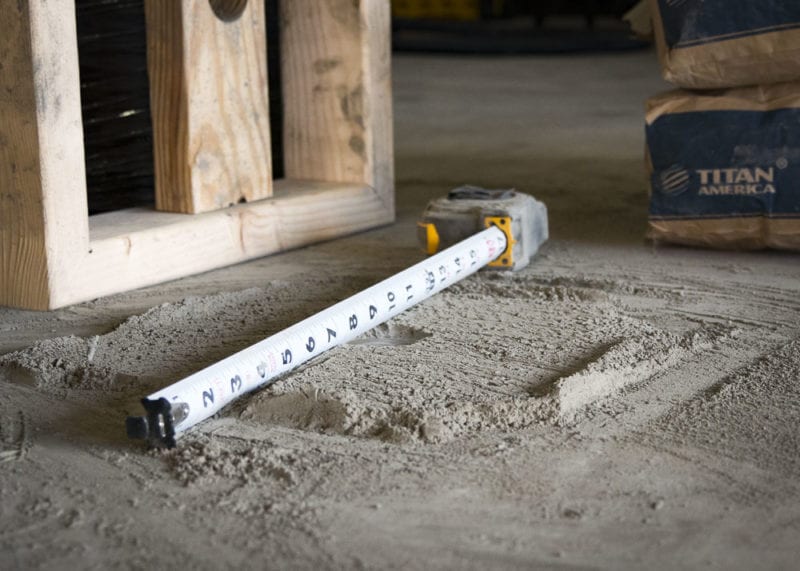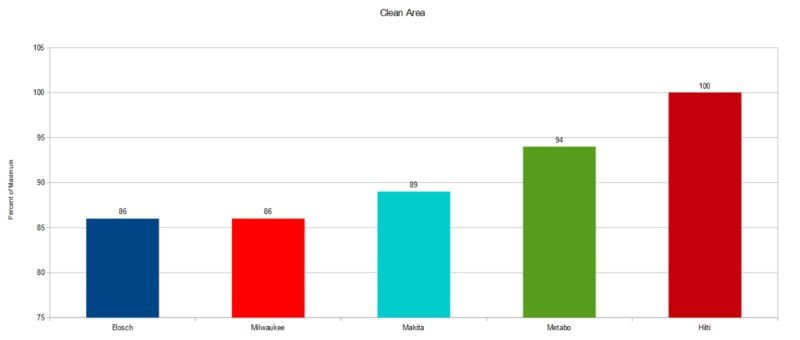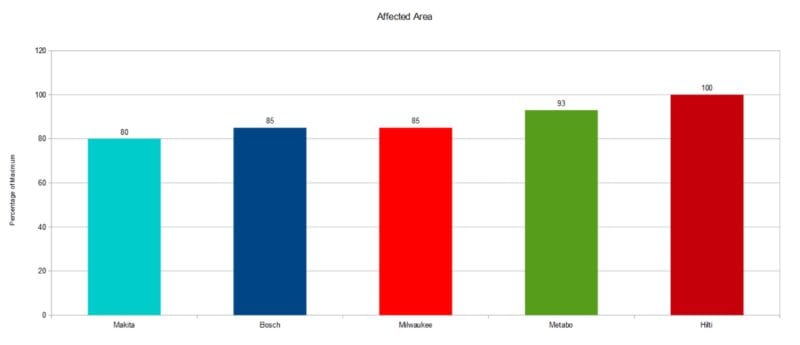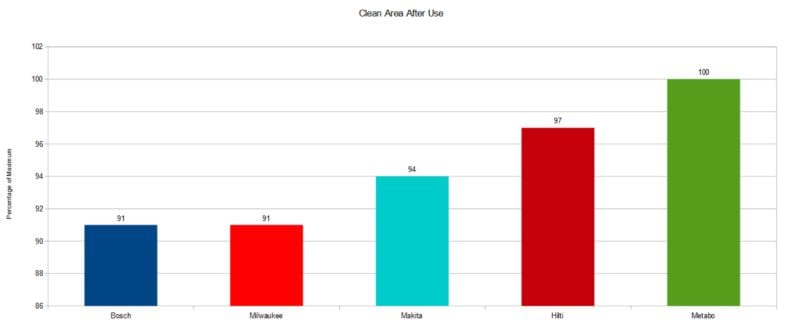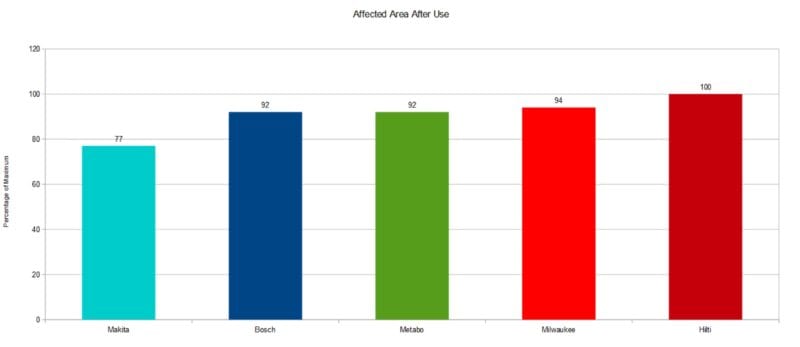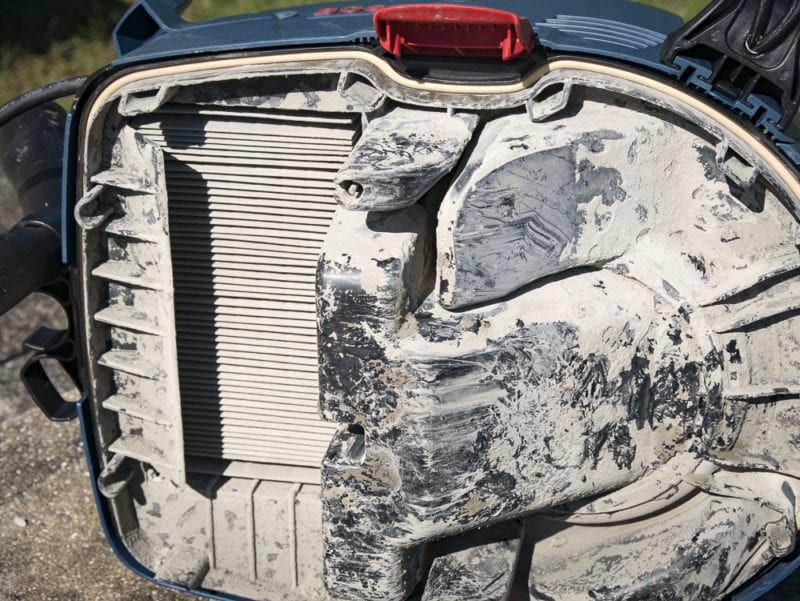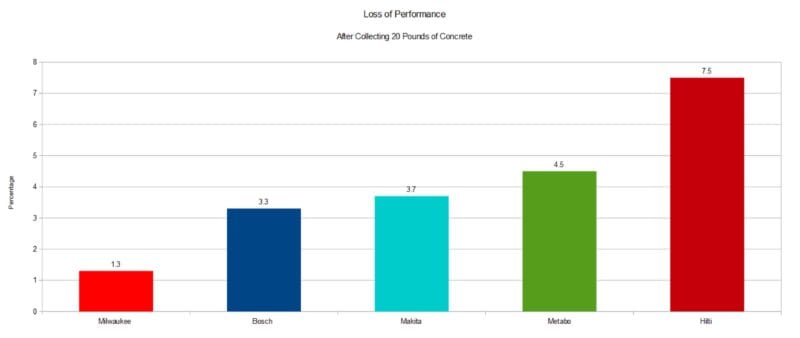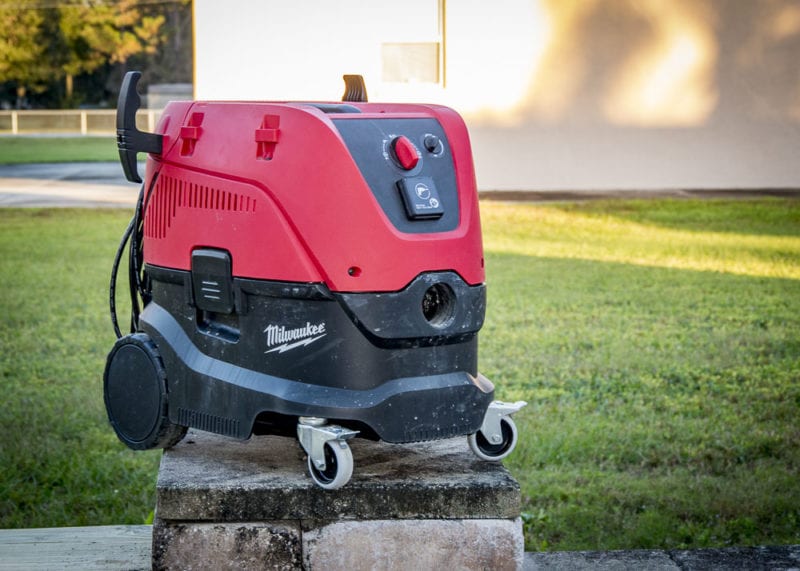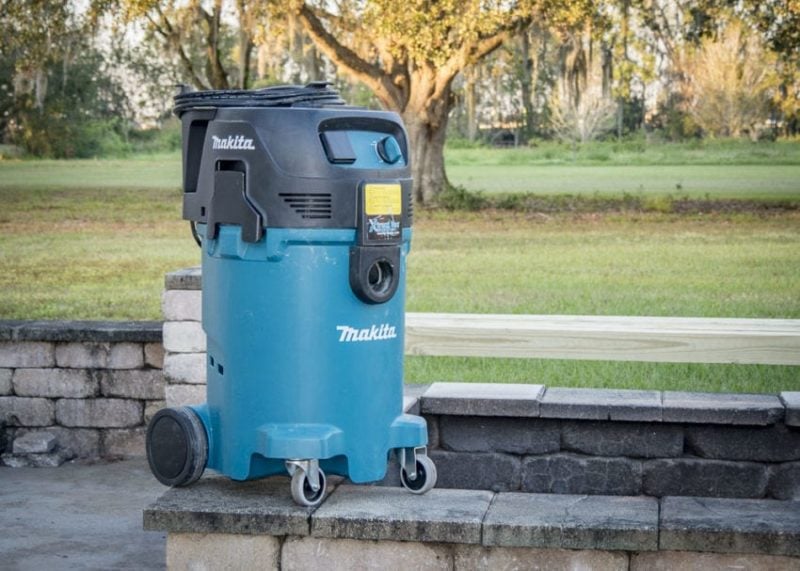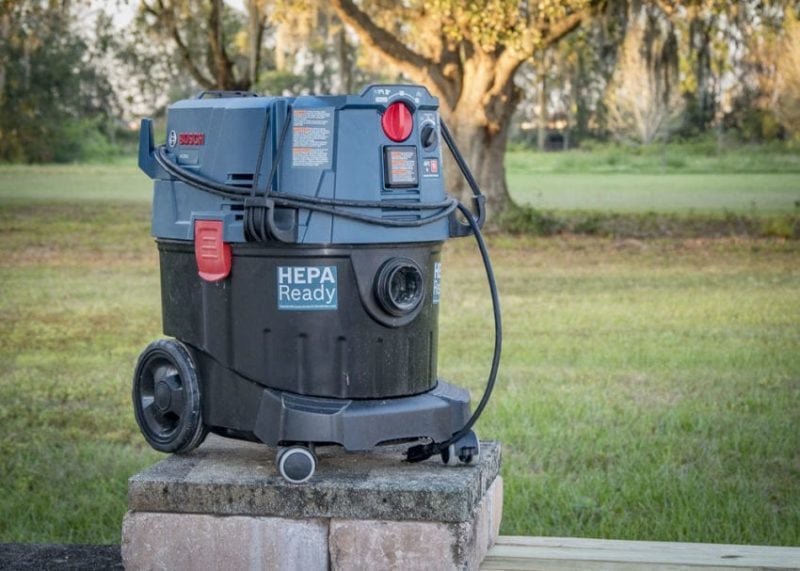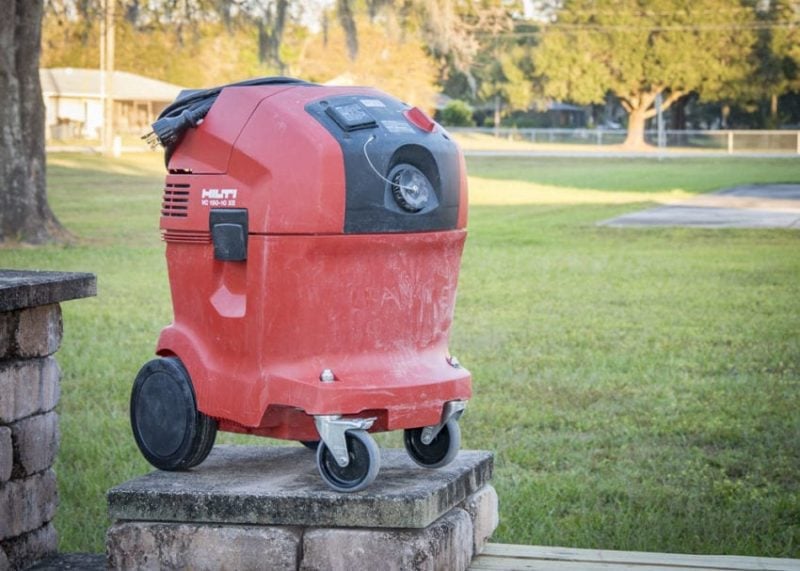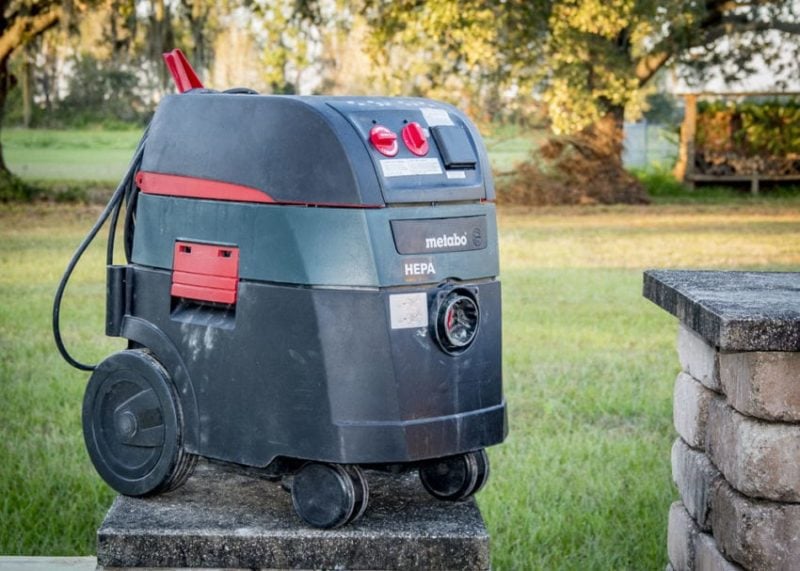Looking for the best OSHA-compliant dust extractor? So are we! But what makes a dust extractor OSHA-compliant these days? More specifically, how do you choose a dust extractor?
To answer that question, we have to look at several things, but the most important is the application. In this head-to-head review, we’re looking for dust extractors that meet OSHA silica dust requirements for working in masonry applications. In order to be fully compliant, your dust extractor needs to have a filter cleaning mechanism and a HEPA filter to be good across the board.
When I started contacting manufacturers about our comparison right after the September 23rd deadline, I was surprised to find that several well-known names didn’t have theirs ready quite yet. We’ll look to revisit those when they hit the market in standalone reviews. The group that we brought in certainly isn’t an exhaustive list of every OSHA-compliant dust extractor out there – it covers the most popular brands. Additionally, I limited the field to the medium size 8 – 12-gallon range. These dust extractors are still easily portable and have a decent amount of capacity to go along with it.
That size requirement actually eliminated the 2017 Pro Tool Innovation Awards winner for dust extractors the beastly Hilti 300 CFM VC 300-17X. Given its twin-turbine design and CFM rating bordering on double what we see from these smaller models, I expect that it would dominate the field. But not everyone needs to spend $1500 on their dust extractor, so back to the matter at hand.
Key Features
HEPA Filter
While the majority of applications don’t actually require a HEPA filter, it is a requirement in some cases. To make sure you’re covered, we’re looking at HEPA-ready extractors only in this test. It’s not as easy as just slapping the filter in any vacuum, though. These 99.97% capture rate filters require a design that won’t allow 0.3-micron (or greater) particles to escape somewhere else on the machine!
Bosch, Hilti, and Makita both require you to grab your HEPA filters separately while Metabo, and Milwaukee all ship with them.
Makita and Metabo both require (and ship with) 2 filters. Just keep in mind you’ll need to grab a pair of HEPA filters to get started with your Makita dust extractor.
Editor’s Note: Bosch now ships with a HEPA filter for the same price as model VAC090AH.
Auto Filter Cleaning
A filter cleaning mechanism is another requirement for an OSHA-compliant dust extractor that you find on all of these units. But not all are created equal. There’s some variance in the auto cleaning interval as well as in the mechanisms. As a point of clarification, the cleaning mechanism isn’t required to be automatic. On a dust extractor, it’s definitely the most efficient way to go, though.
Most auto filter cleaning systems use a reverse airflow method for cleaning the filter. However, that can potentially create a release of dust or damage the filter over time. Metabo uses an electro-mechanical system that eliminates the escape and lowers the risk of filter damage. It’s not a simple innovation and adds to the cost of the dust extractor. But when it comes to reducing the amount of dust that reaches the air, it’s a superior design to the common reverse airflow systems.
When it comes to auto cleaning intervals, more frequently tends to be the way to go. Most of these models automatically clean every 15 seconds. Once again, Metabo moves ahead with a suction performance sensor. When the extractor drops below a predefined performance level, Metabo’s auto cleaning system immediately vibrates the filter to clean it, regardless of where it is in its interval cycle. Metabo is also the only model to feature a cleaning-only mode to run through a cleaning cycle without kicking the vacuum on. The potential downside to more frequent filter cleaning is that you lose some suction performance during the cycle.
Automatic Tool Activation
One of the benefits of going with a premium OSHA-compliant dust extractor is pass-through power. The extractor has an outlet that allows you to run a power tool and automatically turn the vacuum on and off when it senses power going to the tool. It’s a great feature, but it is limited. Every one of our dust extractors has this feature, but the power of the tool you can connect varies widely. Considering that you need 25 CFM for every 1″ of grinder wheel diameter, you’re probably going to want separate power sources for most concrete applications to get the best dust collection possible.
The advantage of running power through the dust extractor is that it senses when you turn the tool on and automatically kicks on the extractor. When you shut the tool down, the extractor runs for a few extra seconds and powers down. All of these dust extractors have this feature.
Hilti gives you the most potential with up to 11 amps available for a tool. Just be sure you’re connecting to a 20-amp breaker if you’re running that much. Bosch comes in second with 7.5 amps available for a tool.
Variable Power Dial
Sometimes you don’t need every CFM or inch of water lift available, so each of these dust extractors has a variable power control dial. Realistically, you’ll leave it on high most of the time. The only time you typically drop the power is when you’re using a tool on the onboard power supply and have to split the tool’s power draw with the dust extractor’s. Try to pull more than what the extractor and/or breaker are rated for and you’ll trip a breaker, blow a fuse, or start a fire.
Only Hilti forgoes this feature – but it doesn’t need it. The extractor can support up to 11 amps (if you’re on at least a 20-amp breaker) without losing any performance.
Wet Vac Auto Off
When you’re sucking up wet concrete slurry or even a plain old water spill, the last thing you want is for the liquid to reach the motor. After all, at more than $500, the best OSHA-compliant dust extractor isn’t what most Pros consider “disposable”. All of our dust extractors have sensors to shut down before the liquid reaches the motor.
Hose/Cord Wrap and Accessory Storage
You’re going to hate your dust extractor if it doesn’t have an effective wrap for the hose and cord. Simply wrapping it around the vacuum’s side is a frustrating experience when both fall away. While each of these OSHA-compliant dust extractors has a hose and cord wrap system, some are better than others. Additionally, many of us like to have vacuum accessories for when we’re not attached directly to a tool and need to clean up the shop or jobsite a bit.
For most of these units, wraps seem to be more of an afterthought. Milwaukee and Bosch both include elastic cords to contain the chaos, with Bosch having slightly better control in this area. Makita comes in third with a pretty top wrap good system. Hilti has a cord wrap on top while Metabo’s top handle pivots out to provide a cord wrap.
Accessory storage is another weak area for most of these dust extractors. Bosch has the most custom accessory storage on the back. Hilti, Metabo, and Milwaukee all have loose top storage, with Milwaukee offering a pair of stand points in the top. Makita has a deeper storage area toward the back with several stand points for accessories.
CFM vs Water Lift
Unlike blowers that market both CFM and airspeed, dust extractors pretty much stick to CFM and water lift ratings. Contrary to what you might think, these are two very different measurements. CFM (Cubic Feet per Minute) measures how much air the motor is moving through the hose. Water lift measures the lifting power which is very different since water creates a closed air system.
You need both for optimal performance. Suction power gets debris moving, while air volume keeps it going.
When it comes to collecting concrete dust, the volume is arguably a more important piece of data since the dust is so lightweight. But high suction power is necessary when collecting slurry and larger chips.
Testing Water Lift
It’s no secret that companies vary on where they take their water lift ratings. But what matters most is at the end of the hose where it connects to the tool. Since each of the hoses are the exact same diameter and reverse threaded, we’re using the same hose and nozzle to control those variables. The only thing we’re changing is the connection to the extractor since each model has a different coupler.
For the water lift test, we used a 2-1/2″ clear pipe so you can see the results more easily. No matter what diameter tube you use, it’s about how much water weight each extractor can lift. So even though the results won’t match up with water lift claims by the manufacturer, it is still an objective, quantifiable test to show the differences in suction force.
Fresh and Clean
Running the extractors on new, clean HEPA filters, the results were spread out from Metabo at the low end (70.25″) to Hilti (85″) with a clear lead over the rest.
Talking Dirty
But that’s not the end of the story. We also tested each system again after sucking up 20 pounds of dry concrete mix. There’s clearly an effect on most extractors, some more than others. Hilti still leads with 81.5″ of lift and Metabo drops to 68″. What’s really interesting is that Makita did not change at all with 77.5″ of lift in both tests. Bosch had the biggest drop in performance, losing nearly 6% and dropping 4.25″.
Clean Up Your Act
And yet there’s more. Each of these OSHA-compliant dust extractor models has an auto filter cleaning system. Aside from Metabo, the rest use reverse airflow. So how does that affect the suction power?
Hilti drops the most, losing more than 35% of its water lift during cleaning. Bosch is right behind, also losing just north of 35%. Once again, Makita is looking great here, only dropping a hair over 5% during cleaning.
Metabo claims to lose no suction during their cleaning process, but we couldn’t verify it. The vac uses a sensor that apparently doesn’t like a static water lift test that restricts airflow through the system. What we noticed is that the auto cleaning comes on immediately with the vac and holds to 61″ before kicking into full power and lifting up to its full 70.25″. But that’s only at startup and not in use. Without the ability to get it to auto clean during the test, we’re scoring it based on what we could test—right around 13%. Just keep in mind that it might not be representative of its actual performance.
Like we did with our other tests, we also checked a clean filter against performance after use.
Testing Vacuum Effect
Lacking a way to quantify actual CFM ratings, we’re looking at it from the perspective of how much debris area each extractor collects. With 1/4″ of loose, dry concrete mix screeded evenly, the end of the nozzle sits 1/2″ from the concrete floor to see how wide an area it will clear. We let the vacs run for 1 minute with auto filter cleaning on. At the end, we measured the area of complete clearing (clean area) and the area of partial clearing (affected area).
What’s interesting is how close you have to get to the material to begin drawing it in. We tested several distances before settling in on 1/2″. The area that is completely or partially cleared is surprisingly small given the power available.
New as a Spring Morning
For complete clearing to the floor, Hilti (2-3/16″) tops the list with Metabo (2-1/16″) being the only other to eclipse the 2″ mark. On the other end, Bosch and Milwaukee tie at 1-7/8″. But with just over 1/4″ separating first and last, it’s a really close test. Even though there’s a gap between Bosch/Milwaukee and Hilti, the bottom two still clear 86% of what Hilti does.
Note – the following four charts are based on the percentage of maximum to show the differences more clearly.
For the partially cleared area (affected area), the order doesn’t change. It ranges from Hilti (3-3/8″) in first to Makita (2-11/16″) at the bottom. This time, there’s more separation, but that’s not a ton. Makita still clears 80% of what Hilti does.
Smoking (Concrete Dust) Kills
Like the water lift test, we repeated this one with 20 pounds of concrete cleaning in each system. On the completely cleared side, Metabo (2-1/16″) takes over the lead while Bosch and Milwaukee (tied at 1-7/8″) bring up the rear. Interestingly, only Hilti (2″) showed a loss from the clean filter test.
For partial cleaning area, Hilti keeps its top spot, dropping to 3″ while Bosch finally separates from Milwaukee with 2-3/4″ and Makita brings up the rear at 2-5/16″.
As it was in the water lift test, Hilti has the biggest drop in performance with a dirty (but auto-cleaned) filter. It loses nearly 14% of its performance compared to Milwaukee who only dropped a hair over 2% and Bosch with a 4.35% performance loss.
Just How Much Does a Used Filter Affect Performance?
When we compared all the data to see just how much better a new filter is over one that’s been used a bit, there were some clear differences. Milwaukee handles dust the best, losing just 1.3% in performance while Hilti suffers the most, losing 7.5% across our battery of tests.
 Related Content
Related Content
Best OSHA-Compliant Dust Extractor Final Rankings
Once in a while, we look at head to head performance and find that we can recommend every single tool we test. This is one of those times. Each of these OSHA-compliant dust extractor models gets our thumbs up for Pros. But we can still differentiate between them and you’ll get some additional performance and/or benefits by moving up the line.
Milwaukee 8-Gallon Dust Extractor
Milwaukee 8-Gallon Dust Extractor Key Features
- Unique two-step filtration system includes a HEPA filter, which captures 99.97% of all particles 0.3 microns or greater
- On-board tool activated plug allows users to start and stop the vacuum with a power tool
- Quiet operation: 69dB
- Suction control dial for performance control
- 13 Foot Anti-Static Hose
- Large wheels, locking swivel casters for jobsite durability
- Water level float valve shuts off suction when tank is full
Milwaukee 8960-20 Specifications
- Model: Milwaukee 8960-20
- Motor: 12 amps
- CFM: 148
- Tested Water Lift: 70.50″
- Capacity: 8 gal
- Hose Length: 13′
- Cord Length: 22′
- Price: $649.00
- Warranty: 3 years
Total Points: 84.3 (5th place)
Pros
- Competitive price point
- Lowest performance loss due to filter use
- Very good value rating
- Very good cord/hose management
Cons
- Lower water lift
- Sub-150 CFM
- High performance loss during filter cleaning
- Lowest cleared area in CFM test
Makita 12-Gallon Xtract Vac Wet/Dry Dust Extractor/Vacuum
Makita 12-Gallon Xtract Vac Wet/Dry Dust Extractor/Vacuum Key Features
- Automatic Filter Cleaning System with blow-back feature is timed at set intervals to maintain filter performance for longer filter life
- Included: Efficient main nano filter set (captures 99.95% particles 2 microns and larger)
- Optional: HEPA filter set is Certified to meet or exceed the efficiency standard (captures 99.97% of particulates .3 microns and larger) – certificate included
- Onboard tool-activated outlet starts and stops vacuum with power tool usage
- Soft start function for lower amp-draw at start-up
- Variable speed control dial for a variety of applications
- Motor chamber constructed of quality sound-absorbing materials resulting in a quiet operating sound level of 59 dB(A)
- Utilizes precision lightweight motor components and efficient air ducting to produce a vacuum weight of only 27 lbs.
- Integrated cord reel and hose brackets for operator convenience
- Large, wide-set, urethane rear wheels create a lower center of gravity for better stability
Makita VC4710 Specifications
- Model: Makita VC4710
- Motor: 12 Amps
- CFM: 135
- Tested Water Lift: 77.50″
- Capacity: 9 gal (dry) / 8 gal (wet)
- Hose Length: 16′
- Cord Length: 24.6′
- Price: $854.99
- Warranty: 1 year
Total Points: 86.3 (4th place)
Pros
- Highest value rating
- Excellent water lift
- Lowest performance loss during filter cleaning
Cons
- Lowest affected area in CFM test
- Sub-150 CFM rating
Bosch 9-Gallon Dust Extractor with Automatic Filter Clean
Bosch 9-Gallon Dust Extractor with Automatic Filter Clean Key Features
- Automatic filter cleaning – cleans filter every 15 seconds to maintain maximum suction power
- L-BOXX integration – instantly creates a mobile workstation
- Power tool activation – allows power tool’s switch to turn vacuum on and off
- Power Broker dial – for allocating power between vacuum and connected power tool. also allows suction control for specialty applications
- EPA lead Related Renovations Repair and Painting (RRP) rule compliant – when accessory VF120H filter is used
- High suction force – high CFM for excellent dust extraction capabilities
- Flat filter design – maximizes canister capacity
- Lightweight and portable – for easier lifting and transportation
- Vacuum hose wrap – keeps hose secure and out of the way during storage or transportation
- Cord wrap – for convenient storage of cord
- On-board accessory storage – convenient storage for easy access to optional wands, nozzles, and other accessories
- Wet vacuuming water level sensor – automatically shuts down vacuum when water reaches a maximum height to protect motor
- Rugged construction/polypropylene tank – durable and rust free
- Rubber wheels and locking caster – built to withstand the demands of a jobsite
Bosch VAC090A Specifications
- Model: Bosch VAC090A
- Motor: 15 amps
- CFM: 150
- Tested Water Lift: 75.50″
- Capacity: 9 gal
- Hose Length: 20.5″
- Cord Length:
- Price: $649
- Warranty: 1 year limited
Total Points: 88.3 (3rd place)
Pros
- Excellent value rating
- Very good water lift
- Excellent feature set
- Very good cord/hose management
Cons
- Second highest performance loss during filter cleaning
- Lowest cleared area in CFM test
Hilti VC 150-10 XE Dust Extractor
Hilti VC 150-10 XE Key Features
- Hilti AirBoost filter technology for consistently high suction performance
- Filter cleaning can be switched off to reduce noise and increase water capacity
- Built-in socket enabling automated simultaneous operation with electric tools for improved working convenience
- 150 CFM level to comply with most OSHA regulations
Hilti VC150-10 XE Specifications
- Model: Hilti 3563661
- Motor: 9 amps
- CFM: 150
- Tested Water Lift: 85.00″
- Capacity: 10 gal
- Hose Length: 16′
- Cord Length: 22′
- Price: $899
- Warranty: 20-2-1 warranty
Total Points: 88.5 (2nd place)
Pros
- Largest cleared area in CFM test
- Largest affected area in CFM test
- Highest water lift
Cons
- Highest performance loss during use
- Lowest value rating
- Largest water lift drop during filter cleaning
Metabo ASR 35 ACP HEPA All-Purpose Vacuum Cleaner
Metabo ASR 35 ACP HEPA All-Purpose Vacuum Cleaner Key Features
- For extraction from the power tool in continuous mode, both on construction sites and in the workshop
- Compact vacuum cleaner for liquids and dry solids with commercial registration
- AutoCleanPlus: saves both costs and time thanks to automatic MPulse filter cleaning during continuous use
- If the optimum suction performance falls below a certain level, the filters are vibrated immediately
- Automatic shut-down when vacuuming liquids once the maximum fill level is reached
- Especially suited for extracting concrete and rock dust
- Suction power control for adapted suction performance
- Power socket for a power tool for using the automatic start-up/shut-down of the vacuum cleaner
- Two polyester filter cassettes with large filter area for constantly high suction capacity
- Automatic trailing mechanism for emptying the suction hose completely
- Antistatic basic equipment prevents static charge when using appropriate accessories
- Sturdy thanks to especially large wheels and castors with wheel stop
- Cable winding mechanism
- Practical accessory case and storage area
- Current Control: maximizes the suction power while the machine is connected so that the main fuse is not triggered
Metabo ASR 35 ACP HEPA Specifications
- Model: Metabo US602057800
- Motor: 11 Amps
- CFM: 130
- Tested Water Lift: 70.25″
- Capacity: 9 gal
- Hose Length: 10′
- Cord Length: 26′
- Price: $599
- Warranty: 3 years
Total Points: 91.1 (1st place)
Pros
- Second largest area cleared in CFM test
- Second largest area affected in CFM test
- Most comprehensive feature set
Cons
- Lowest water lift
- Second lowest value rating
- Sub-150 CFM rating
What About DeWalt?
DeWalt’s dust extractor didn’t make it in time for our testing, but we did run it through the same tests as the rest of the group. While the tests were done at a different date, DeWalt earns 87.4 points – a solid showing. Check out the full review for more details.
And Hitachi?
It’s not surprising that the Hitachi RP350YDH comes in very close to Metabo since they’re nearly identical models. Like DeWalt, the tests were run on a separate date once we got the extractor in and earns an impressive 90.5 points – good enough for second place.

